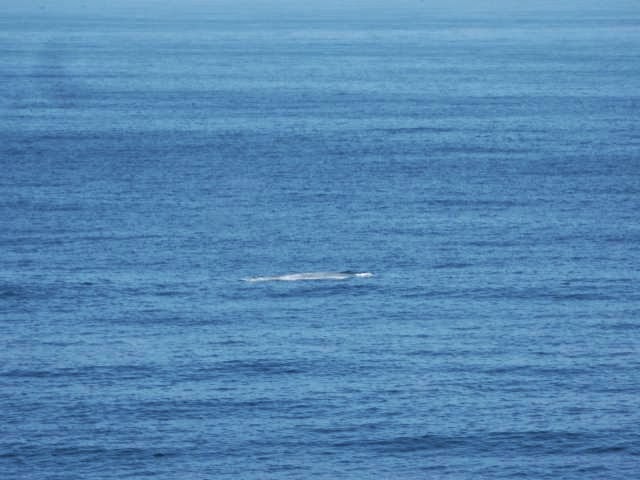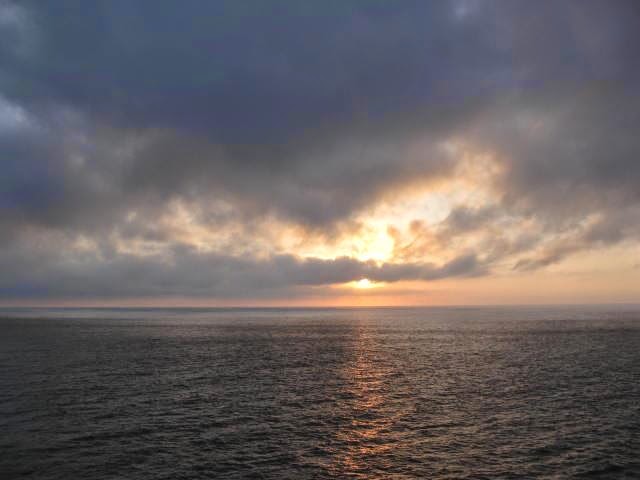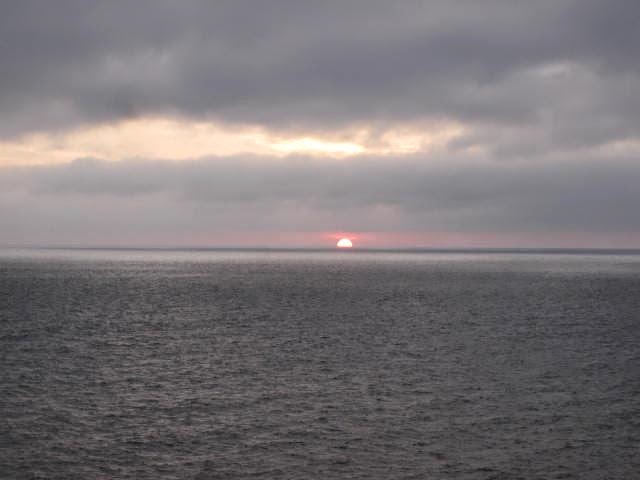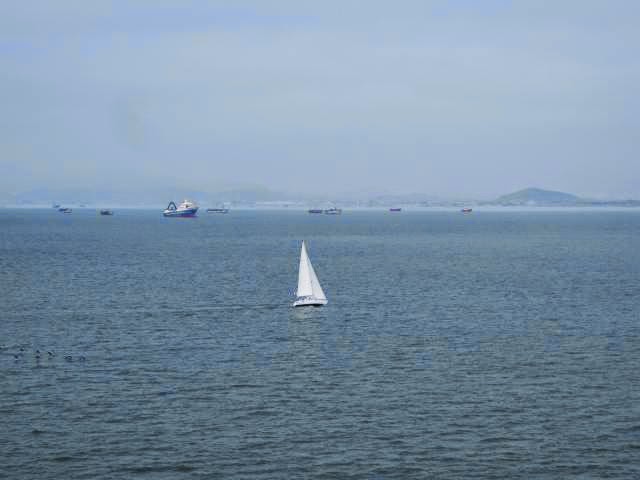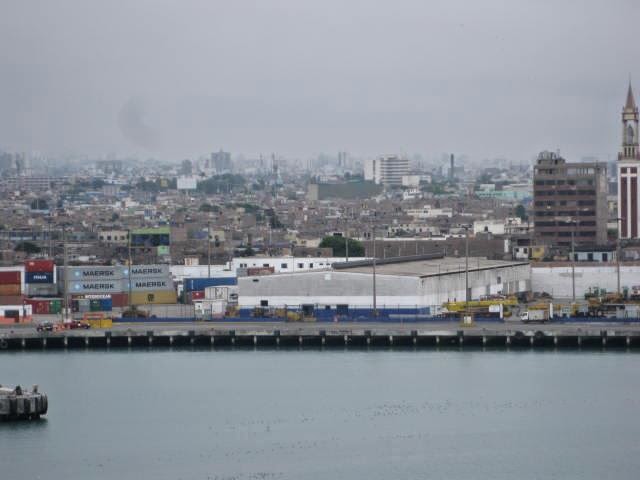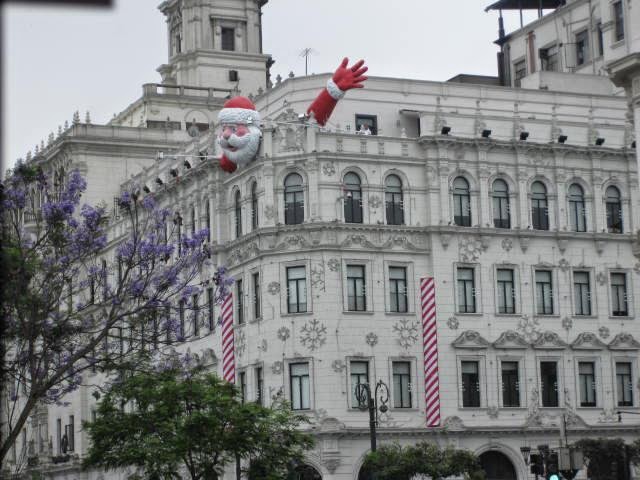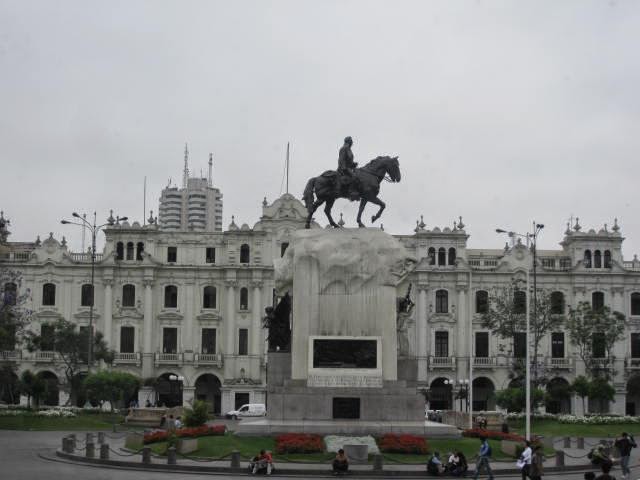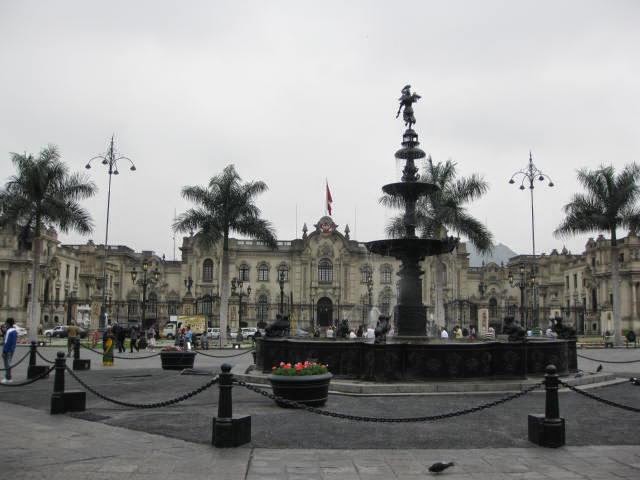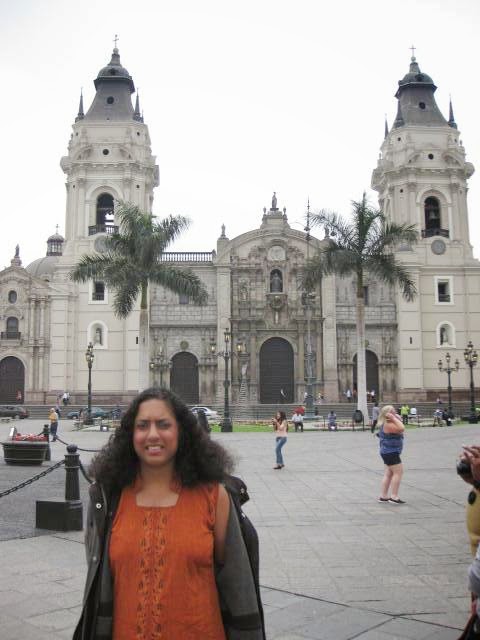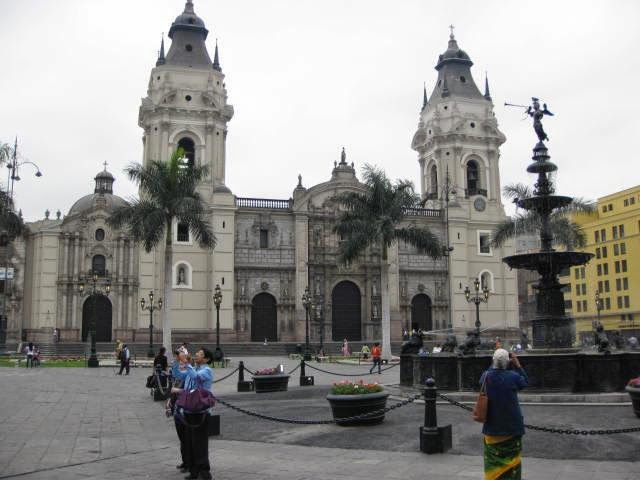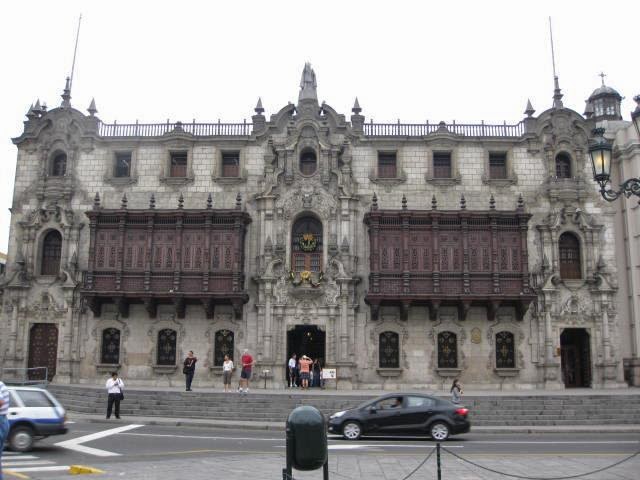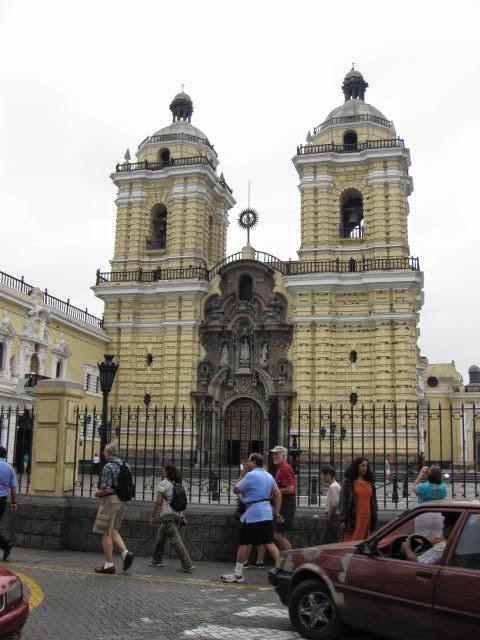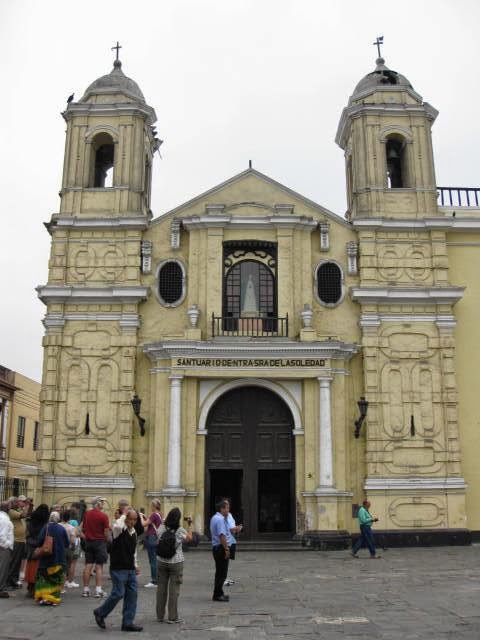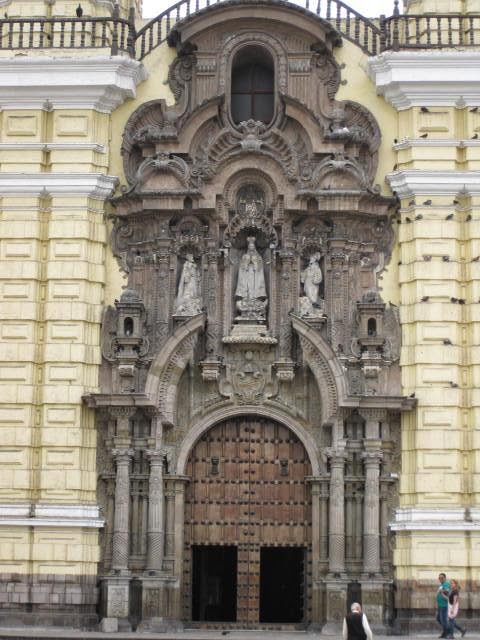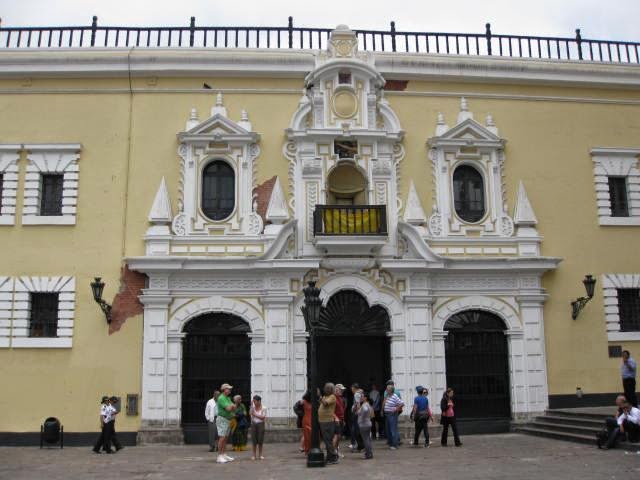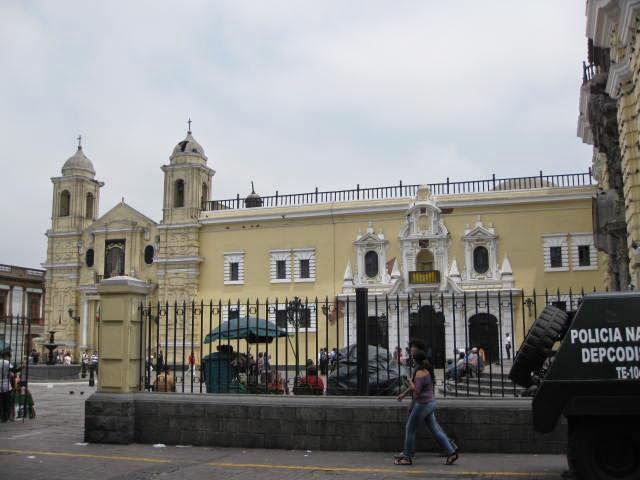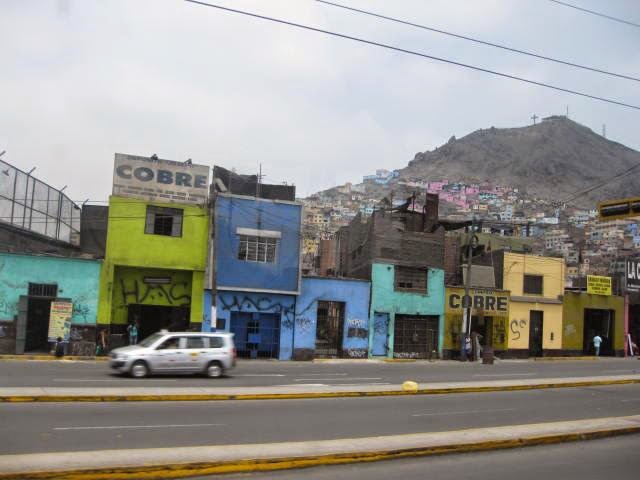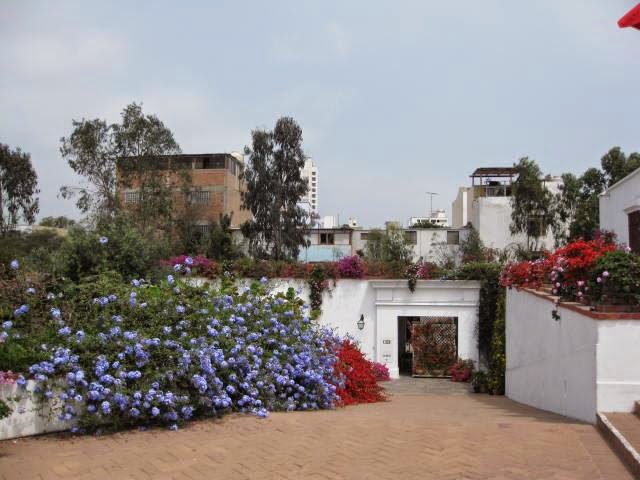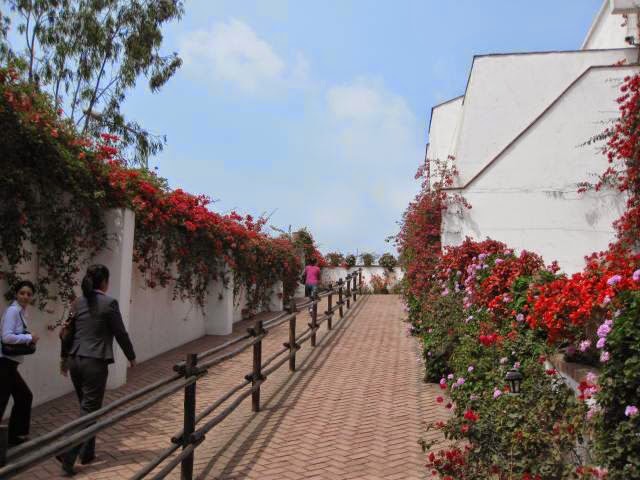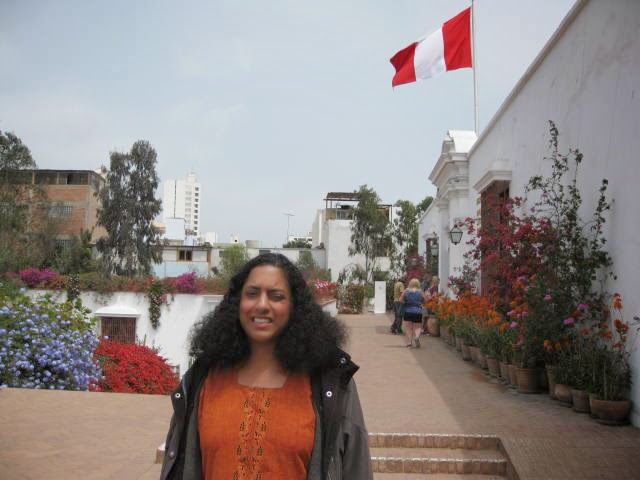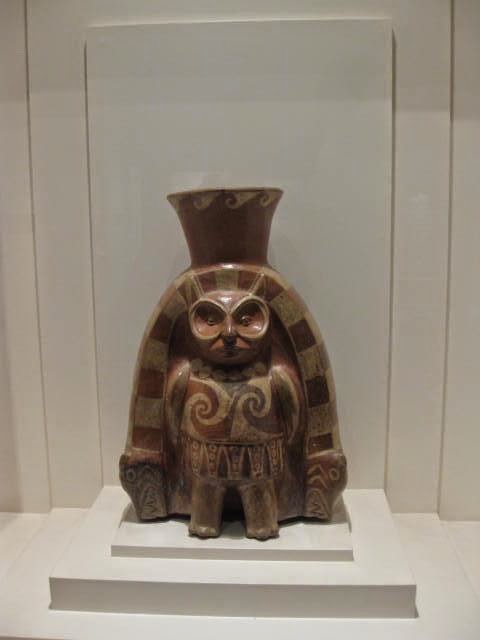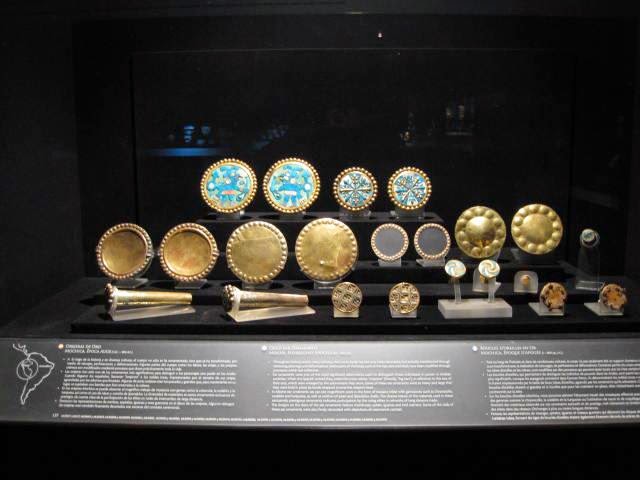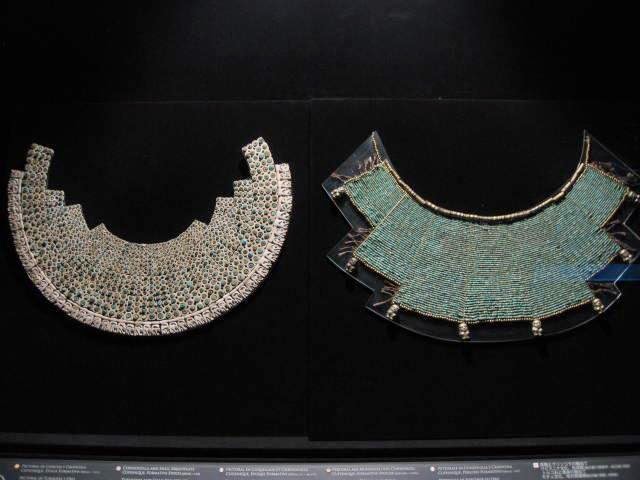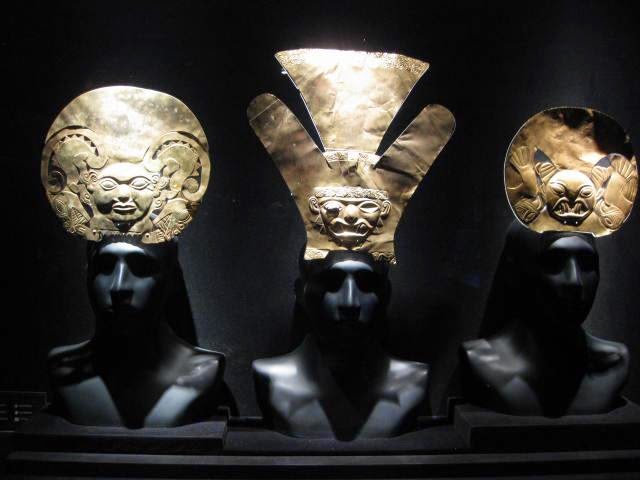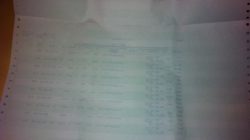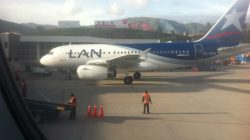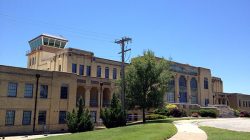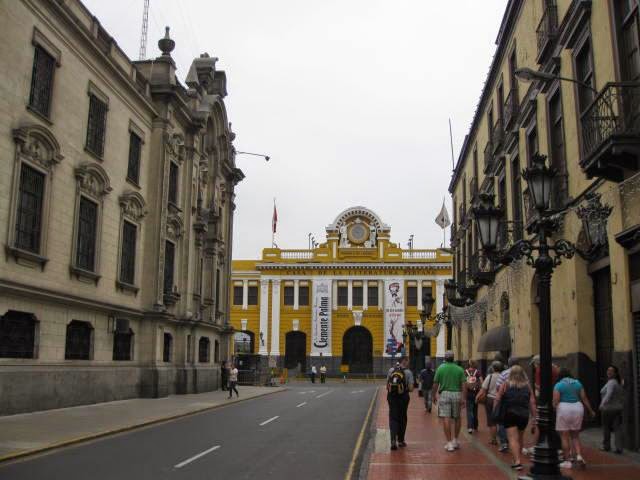
This is part 5 of my series about our cruise to South America in December, 2012. Today’s port-of-call is Lima, Peru’s capital city. This would be my third country in South America, after Colombia and Ecuador.
For a general overview of the cruise and the trip report index, click here.
Date of Visit: Monday, December 17, 2012
Cruising down the west coast of South America is a longer trip than it might first appear. The Pacific coastline is nearly 5,000 miles long from Colombia to the Tierra del Fuego (a place I very much hope to go someday) at the Chile/Argentina border. This meant two whole sea days to get from Manta to Lima, or more specifically Callao, a western suburb where the port is located.
On the first sea day, we saw numerous sightings of whales and dolphins. I don’t have a high-powered camera to get a good shot of a moving animal, but I was able to get this fuzzy shot of a whale (or possibly a dolphin) from our balcony.
We were also treated to yet another spectacular sunset, courtesy of some clouds that happened by in the early evening.
Originally, we were scheduled to arrive in Lima at 8 A.M. Monday morning. However, we were told late Saturday that the Peruvian immigration authorities wanted to check every single passenger’s passport before anyone would be allowed to deboard. The captain decided to haul a** and get to Lima by Sunday afternoon instead, so that immigration could go through passports and we would be allowed to leave the ship as scheduled Monday morning. Not a terrible outcome, with the only drawback being that we would be stuck all afternoon and evening on the ship in a smelly port (and it was REALLY smelly from our balcony, which meant sitting out there wasn’t an option). But as it turns out, nothing would go smoothly from this point forward, and Celebrity’s handling of port snafus would leave much to be desired. More on that in future posts.
The arrival into Callao provided for some good photo opportunities. Notice the smog in the background. The cool Humboldt current keeps this part of South America temperate but rather cloudy, which leads to a lot of smog getting trapped near the ground, similar to Southern California. Summer in Peru (late December through April) is usually the one time of year that it is sunny, but we were told that we were about a week or two too early to see much of the sun.
Lima is one of the oldest cities in South America, founded by Spanish explorer Francisco Pizarro in 1535 (Peru had been inhabited by the Incas for many centuries prior to that). More than 7.6 million people call Lima home today. Many historical buildings and institutions still exist today, and several of these would be on the agenda for our guided tour, with the same group of people we toured with in Cartagena. This time, though, I made sure to triple check the time so we wouldn’t be late…
It took about half an hour to get from the port of Callao to the center of Lima. One of the first things we passed by was an enormous Santa Claus head hanging out of a building.
Next we passed by the Plaza Castilla, which contained a statue of Jose de San Martin, a revolutionary who helped Peru gain its independence from Spain in 1821.
We then stopped for some time at the Plaza Mayor (Central Square), also known as the Plaza de Armas. Several buildings of historical significance can be found in this general vicinity, but perhaps the two most important are the Palacio del Gobierno (Presidential Palace) and the Catedral de Lima. The first photo is the palace, completed in 1930, along with the fountain in the center of the plaza.
The Catedral de Lima, a stunning piece of baroque architecture, was originally constructed in 1564, but several earthquakes destroyed the main building over the years. What you see today was mostly constructed in 1746. The Cathedral also houses the remains of Pizarro.
Also on the Plaza is the Archbishop’s Palace. This building looks older than it really is. It was “only” built in 1924.
We then took a driving tour around the city for awhile before heading to our last stop of the day. On the way, we passed by one of the city’s colorful slums, which you can see extends well up the hill in the background. This is a typical scene when traveling in developing countries – pockets of poverty, sometimes extreme, juxtaposed with beautiful colonial architecture and gleaming office towers.
After driving around for an hour or so, we proceeded to our final stop of the day, the Museo Larco (Rafael Larco Herrera Archeological Museum). In addition to being located in a beautiful, flower-filled garden, the museum showcases Peru’s pre-Columbian history, including a large collection of textiles, ceramics, and gold and silver coins and jewelry, among other things.
First, the beautiful gardens surrounding the museum. A few breaks in the clouds had finally developed by then, making for a wonderful afternoon.
Here are a few samples of the ceramics, gold/silver objects, and jewelry on display in the museum.
It was already after 2 by this point, and time to head back to the ship. That’s one of the drawbacks of cruising. You get to see a lot of different places, but rarely stay in one place long enough to really explore it in depth. I’d like to return to Peru one day, especially to take a few days to visit Machu Pichu and the Andes.

